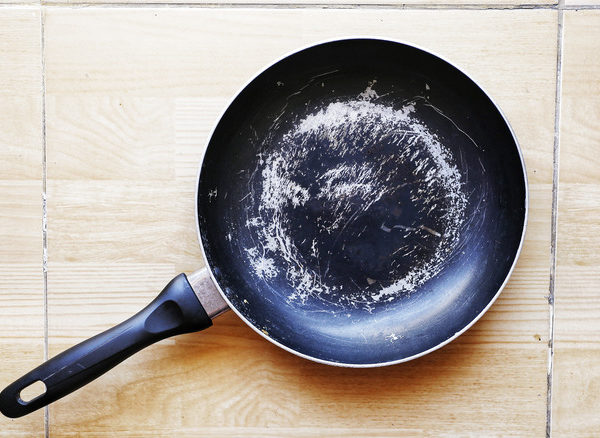Spending each morning at the kitchen sink scraping at the charred remains of breakfast gets tedious after a while. Non-stick cookware may seem like an appealing alternative — but is it safe?
Usually when people inquire about the safety of their non-stick cookware, they’re talking about the brand Teflon, said Suzanne Fenton, a reproductive endocrinologist at the National Institutes of Environmental Health Sciences in North Carolina. Also known as polytertrafluoroethylene (PTFE), this clear plastic is used to coat metal pots and pans, giving them a waxy, easy-to-clean surface — and for decades, scientists have debated whether it’s safe for cooking.
Experts tend to agree that Teflon itself isn’t a problem. The coating itself is considered non-toxic. Even if you ingest small flakes of it, it passes right through you. But some experts are concerned about what happens when Teflon gets too hot. “When pans are overheated, that PTFE coating begins to disintegrate,” Fenton told Live Science. As Teflon breaks down, it releases a host of toxic gases. In rare instances, breathing in these chemical fumes can cause polymer fume fever, a condition characterized by a high fever, shortness of breath and weakness. These gases also deadly to birds — lightbulbs coated in Teflon have wiped out poultry houses. Of particular concern is perfluorooctanoic acid (PFOA), one of the chemicals released when Teflon pans heat up. Long-term exposure to PFOA is linked to a host of conditions from cancer to thyroid disease, Fenton said.
Not all researchers think that people need to worry about their Teflon pans breaking down. Some point out that no studies have specifically analyzed the long-term effects of Teflon pans on humans. Instead, these studies focus on the health-effects of Teflon’s chemical byproducts, like PFOA. Much of the data on these toxins come from cases of environmental exposure — such as drinking water or factory settings, where exposure levels are much higher than they would be from non-stick cookware. “Generally speaking, nonstick pans are not dangerous,” said Kyle Steenland, a professor of environmental health at Emory University in Atlanta.
Steenland and other scientists also argue that people don’t cook at high enough temperatures for these chemical reactions to take place. “Now, if you burn your pans for an hour at high heat, it [Teflon] will break down,” “But that will be the least of your problems because your house will be on fire.”
However, research suggests pans can easily reach a temperature hot enough to disintegrate Teflon. One group of researchers in Canada published a 2001 study in the journal Nature, in which Teflon broke down at 680 degrees Fahrenheit (360 degrees Celsius). For context: a Teflon-coated pan can reach 750 F (399 C) if left for eight minutes at high heat on a stovetop, according to a 2017 article published in Environmental Science and Pollution Research. And at lower temperatures, Teflon coating still breaks down over time, according to a 1998 article published in the journal Polymer Degradation and Stability. If you consistently heat your pan to 500 F (260 C; the temperature at which we sear steak), the pan should last around 2.3 years, according to the 2001 Nature study.
In 2015, PFOA was voluntarily phased out in the U.S., but the chemical is still widely used in China, according to Steenland and Fenton. However, it’s possible that the clear plastic coating known as PTFE can still create PFOA when it breaks down, research finds.

